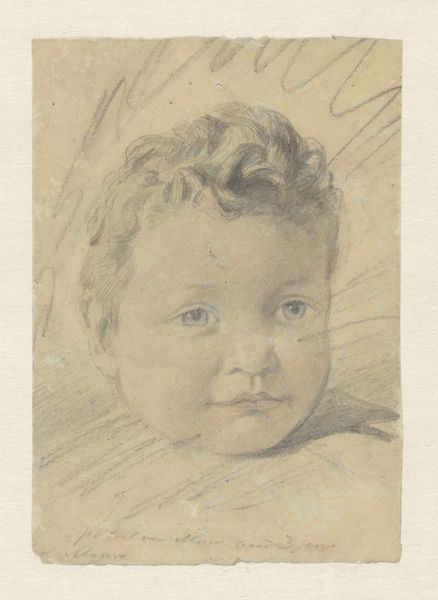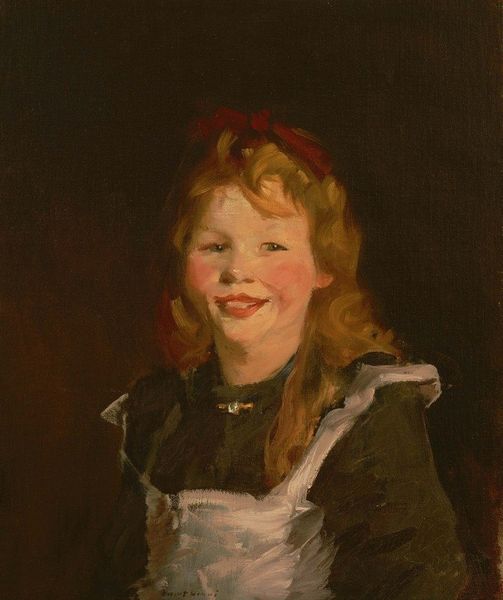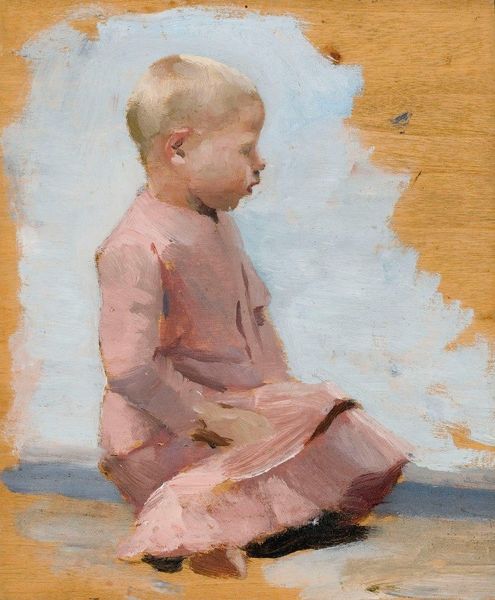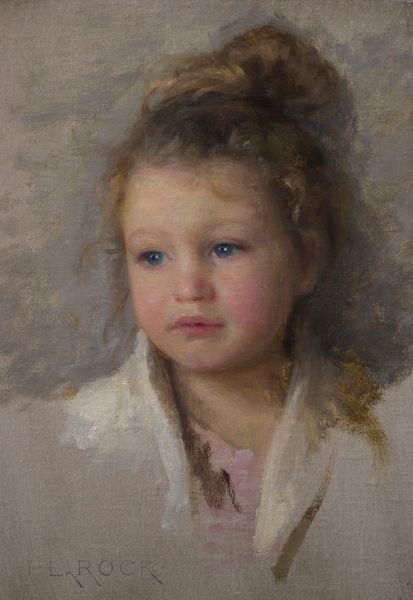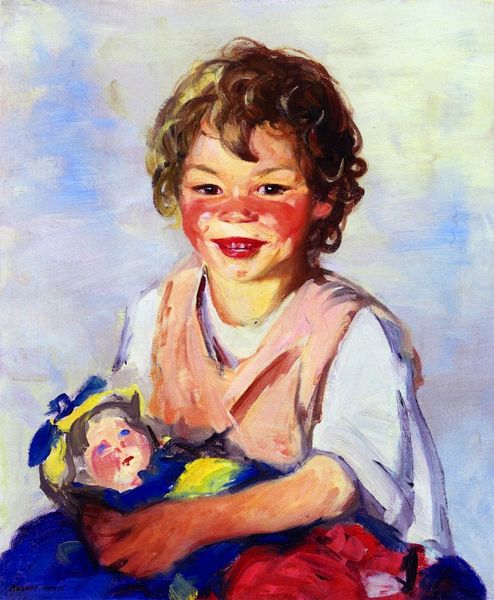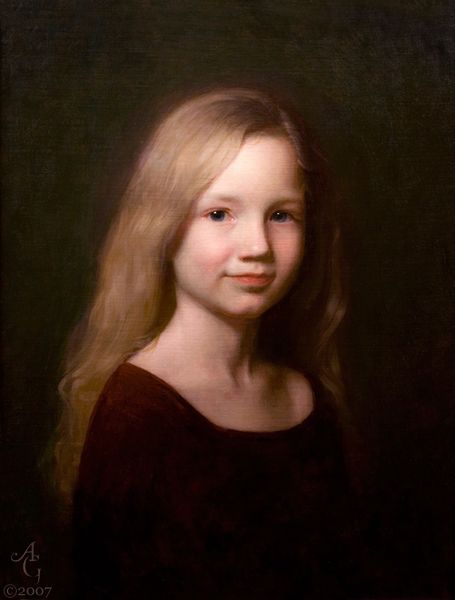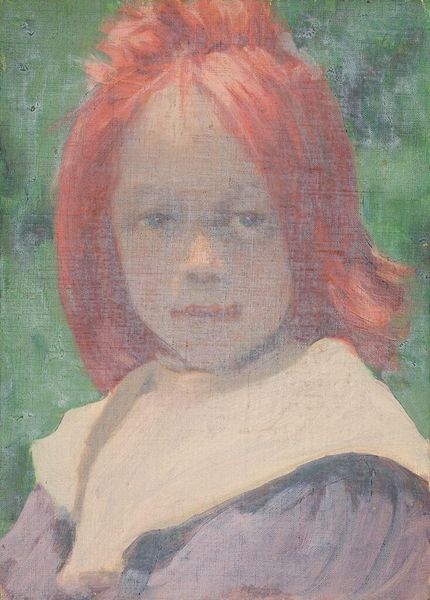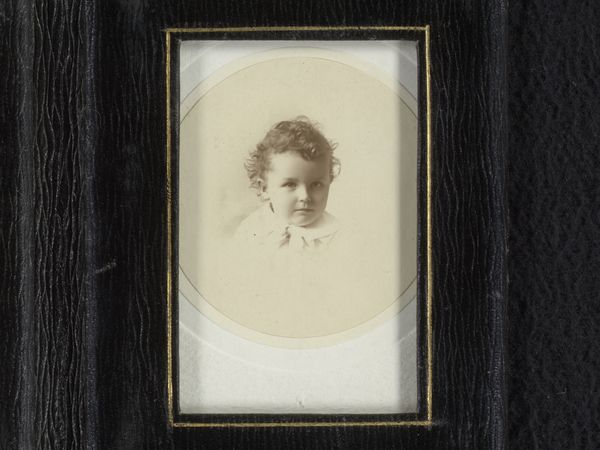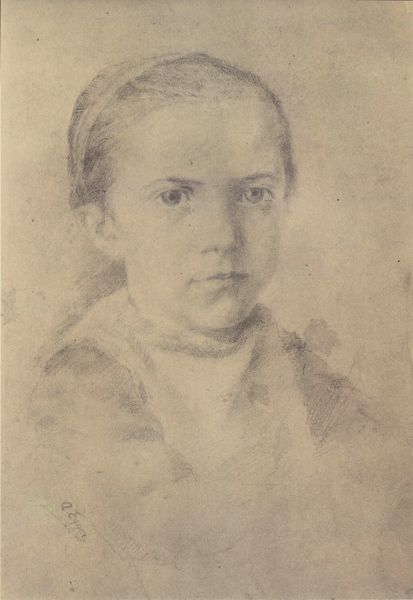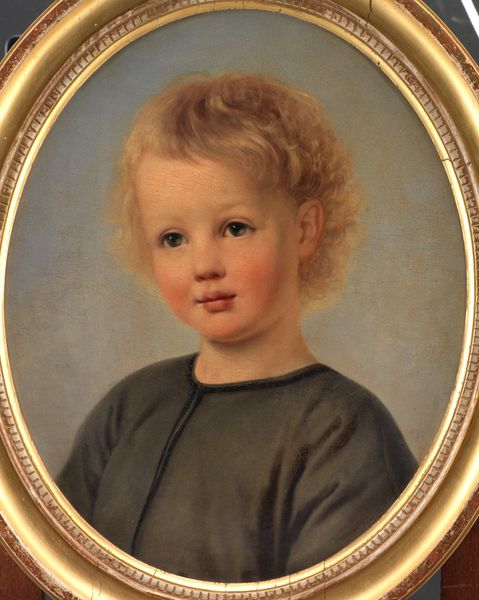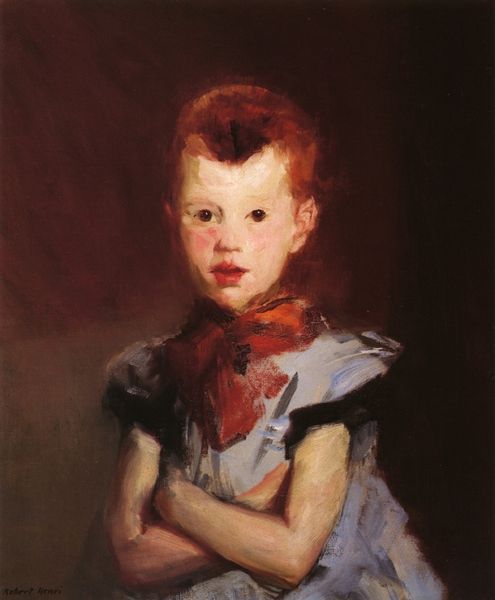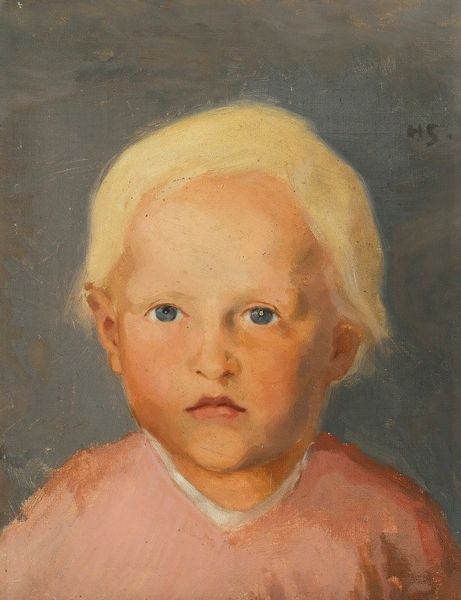
painting, oil-paint
#
portrait
#
painting
#
oil-paint
#
figuration
#
oil painting
#
portrait reference
#
italian-renaissance
#
realism
Copyright: Public domain
Editor: Here we have Romualdo Locatelli's oil painting "Drawing for the portrait to His Royal Highness Vittorio Emanuele," created in 1938. It's a really endearing portrait. It almost feels like a snapshot in time, capturing a genuine moment of childish glee. How do you interpret the role of portraiture during this period, particularly concerning its subjects? Curator: Considering this was painted in 1938, the historical context is critical. Italy was under Fascist rule, and portraiture was frequently employed as a tool for propaganda and solidifying the regime's image. The fact that it’s titled as a preliminary drawing complicates things further. The image itself is relatively informal compared to state-sponsored portraiture – what does this informality suggest to you about its intended purpose, if any? Editor: I hadn’t thought about the political implications. I guess I just saw it as a sweet child portrait! Thinking about propaganda, it almost feels… too human for that, perhaps? Is it naive of me to view it this way? Curator: Not at all! Its very intimacy contrasts sharply with the monumental and often stiff official portraits of the time. This could have been intended as a more personal depiction, perhaps commissioned by the family. Its status as a preliminary drawing also softens any overtly propagandistic intention. The choice to present royalty in such an approachable manner humanises the monarchy. But who benefits from that 'humanizing'? It might have also been strategically deployed to make the royal family seem more relatable to the general population. Does that make sense? Editor: That's a very nuanced way of looking at it. I initially viewed it in a very isolated manner, as an art piece divorced from socio-political themes. Now I can better contextualize the image as a potential instrument for conveying power, even subtly. Thanks! Curator: Precisely. Recognizing the intersection of art and socio-political power enhances the viewing experience! I'm glad we could offer you more than just what initially meets the eye!
Comments
No comments
Be the first to comment and join the conversation on the ultimate creative platform.
